Charcuterie boards have gained popularity as a favorite for gatherings, providing an enjoyable mix of flavors and textures. Whether you’re hosting a casual get-together or need a quick snack for a night in, small charcuterie boards are the perfect solution. These compact boards can still pack a punch in terms of flavor, variety, and presentation, without overwhelming your guests or taking too much time to prepare.
In this comprehensive guide, we’ll explore everything you need to know about creating the best small charcuterie board, from selecting the right ingredients to arranging them beautifully. By the end of this article, you’ll be well on your way to mastering the art of the charcuterie board and impressing your guests with your creativity and attention to detail.
Table of Contents
What is a Small Charcuterie Board?
Before diving into the details, it’s important to understand what a small charcuterie board is. A charcuterie board traditionally features a selection of cured meats, cheeses, and accompaniments. In the case of small charcuterie boards, the goal is to create a compact yet flavorful spread, perfect for a small group of people or an intimate occasion.
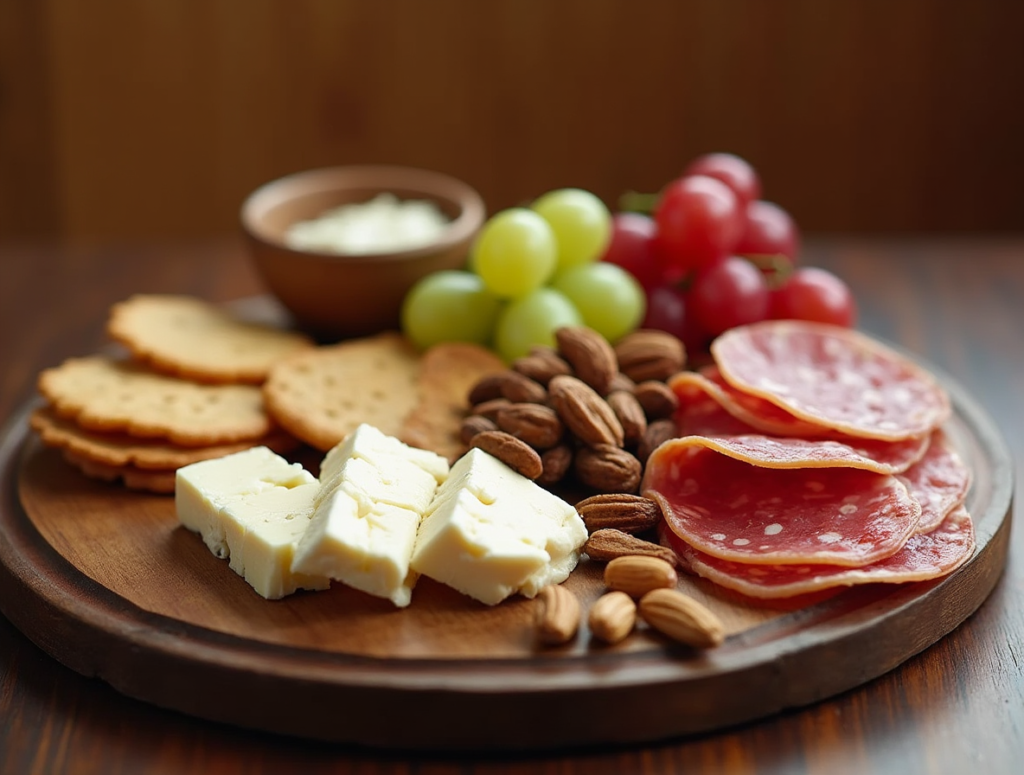
Think of it as a scaled-down version of the traditional charcuterie board, offering a curated experience that doesn’t take up too much space or require hours of preparation. You can still achieve a beautiful and delicious spread without overloading your guests with too many options.
Why Choose a Small Charcuterie Board?
There are several reasons why small charcuterie boards have become so popular. First, they’re perfect for smaller gatherings, such as a cozy dinner with a friend, a date night, or even a solo snack while binge-watching your favorite shows.
Here are some reasons why small charcuterie boards are a great choice:
- Easy to Prepare: A small charcuterie board requires fewer ingredients, making it quicker and easier to put together than a large board.
- Portion Control: With fewer items, it’s easier to manage portion sizes, making it ideal for those who are looking to control their intake.
- Perfect for Intimate Gatherings: A small charcuterie board allows you to create a personalized experience for just a few people without the need for an elaborate spread.
- Aesthetic Appeal: Although compact, small boards can be equally captivating as larger ones, providing a chance to showcase creative presentation.
Key Elements of a Small Charcuterie Board
Creating the perfect small charcuterie board requires careful selection of a few key elements. Here’s a breakdown of what you’ll need:
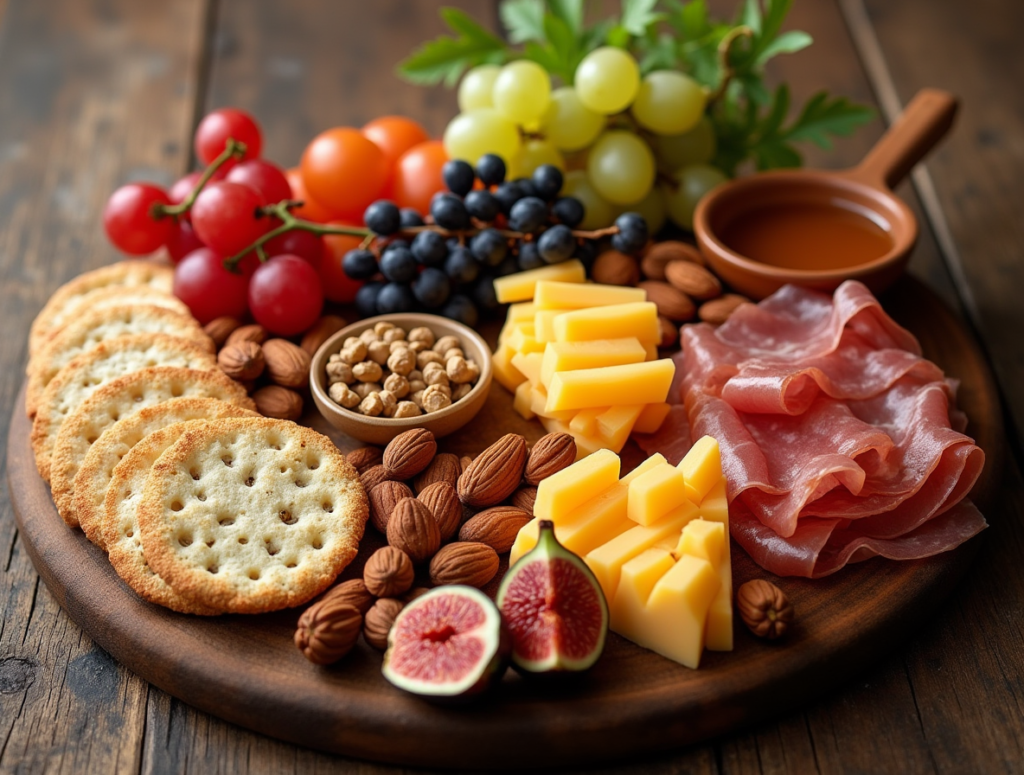
1. Cured Meats
Cured meats serve as the cornerstone of any charcuterie board. For a small board, aim for two to three varieties of meats that offer a balance of textures and flavors.
- Prosciutto: Thinly sliced, salty, and delicate, prosciutto is a classic charcuterie meat.
- Salami: Offers a bit more spice and firmness, perfect for adding variety.
- Capicola: Another flavorful meat with a slightly spicy edge.
You don’t need to overdo it with the meats—two or three types will provide plenty of variety without overwhelming the board.
2. Cheeses
Cheese is just as important as the meats, and like cured meats, you want to provide variety. A good cheese selection will include a mix of textures and flavors. Aim for three options, such as:
- Brie: Soft, creamy, and mild.
- Cheddar: Sharp and firm, offering a contrasting texture.
- Gouda: Sweet and nutty, adding depth.
Feel free to swap these out for your favorites, but try to include one soft cheese, one semi-soft, and one firm or aged cheese for contrast.
3. Crackers and Bread
To balance the richness of the meats and cheeses, a variety of crackers and breads is essential. Include a few options such as:
- Crispbread: Great for a lighter, crunchier texture.
- Baguette Slices: Perfect for spreading cheese or toppings.
- Salty Crackers: Ideal for pairing with sweeter cheeses or meats.
4. Fresh and Dried Fruits
Adding fruits brings both sweetness and visual appeal to the charcuterie board. Consider including:
- Grapes: Classic and refreshing, they pair well with nearly every cheese.
- Figs: Both fresh and dried figs offer a rich, sweet contrast to the savory items on the board.
- Apple Slices: Crisp and slightly tart, they complement rich cheeses and meats perfectly.
5. Nuts and Olives
Nuts and olives can add an extra layer of flavor and texture. Consider the following:
- Almonds: Mild and crunchy, almonds are a great pairing for cheese.
- Olives: Whether green or black, olives add a salty, briny note that complements both meats and cheeses.
- Pistachios: A fun and colorful addition with a slightly sweet flavor.
6. Spreads and Dips
To round out the flavors, include one or two spreads or dips. Some options include:
- Honey: Adds a touch of sweetness that works beautifully with cheeses like brie or blue cheese.
- Mustard: A tangy mustard, like whole grain, can balance out the richness of the meats.
- Jam: Fig or apricot jam is a popular choice, adding sweetness to complement the savory items.
How to Arrange a Small Charcuterie Board
The key to a great charcuterie board isn’t just the food—it’s also the presentation. Here are some tips for arranging your small charcuterie board:
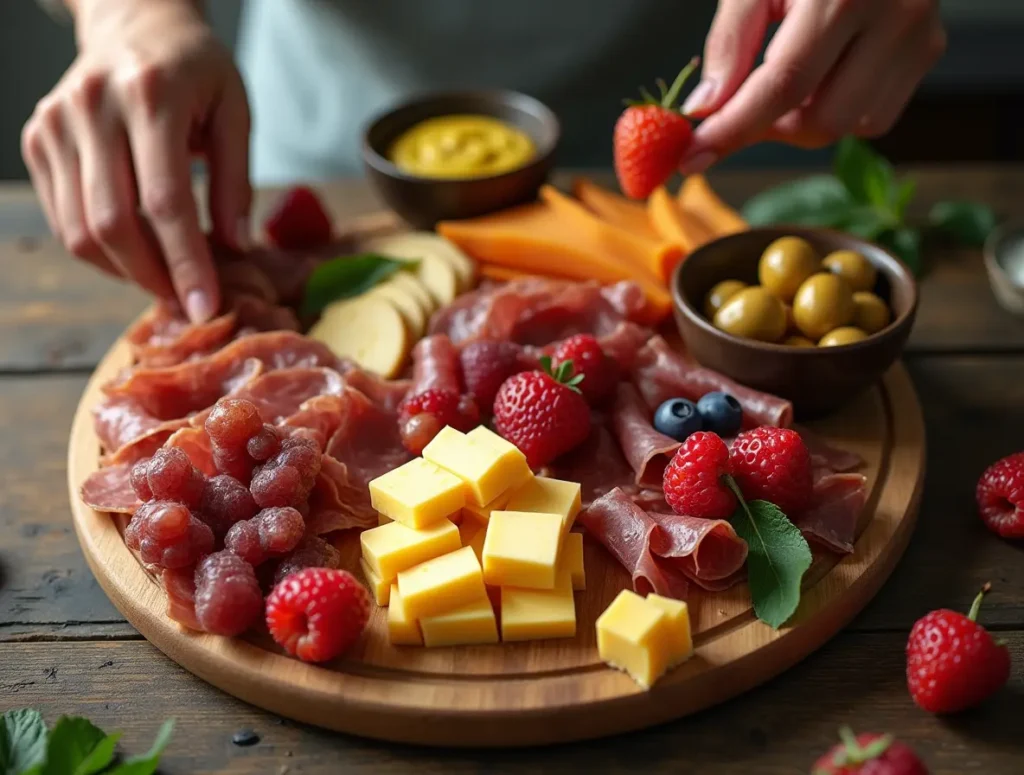
- Start with the Base: Place your cheeses and meats first. Space them out evenly, but don’t crowd the board. Allow each element to breathe.
- Add the Crackers and Bread: Place these around the cheeses and meats. Use a combination of straight lines and curves to create an organic flow.
- Fill in with Fruits and Nuts: Use the fruits and nuts to fill in the spaces between the other ingredients, creating a balanced look.
- Use Bowls for Spreads: If you’re using jams, honey, or other spreads, place them in small bowls and arrange them near the cheeses or meats that pair well with them.
- Garnish with Fresh Herbs: For an added pop of color, garnish your board with fresh herbs like rosemary or thyme.
Serving and Enjoying Your Small Charcuterie Board
When it comes time to enjoy your board, be sure to provide small knives or cheese spreaders for easy serving. You might also want to offer wine pairings for a complete experience. Red wines like Cabernet Sauvignon or Pinot Noir pair wonderfully with meats and cheeses, while white wines such as Sauvignon Blanc work well with lighter options.
Creative Variations for Your Small Charcuterie Board
If you want to get creative with your small charcuterie board, consider these variations:
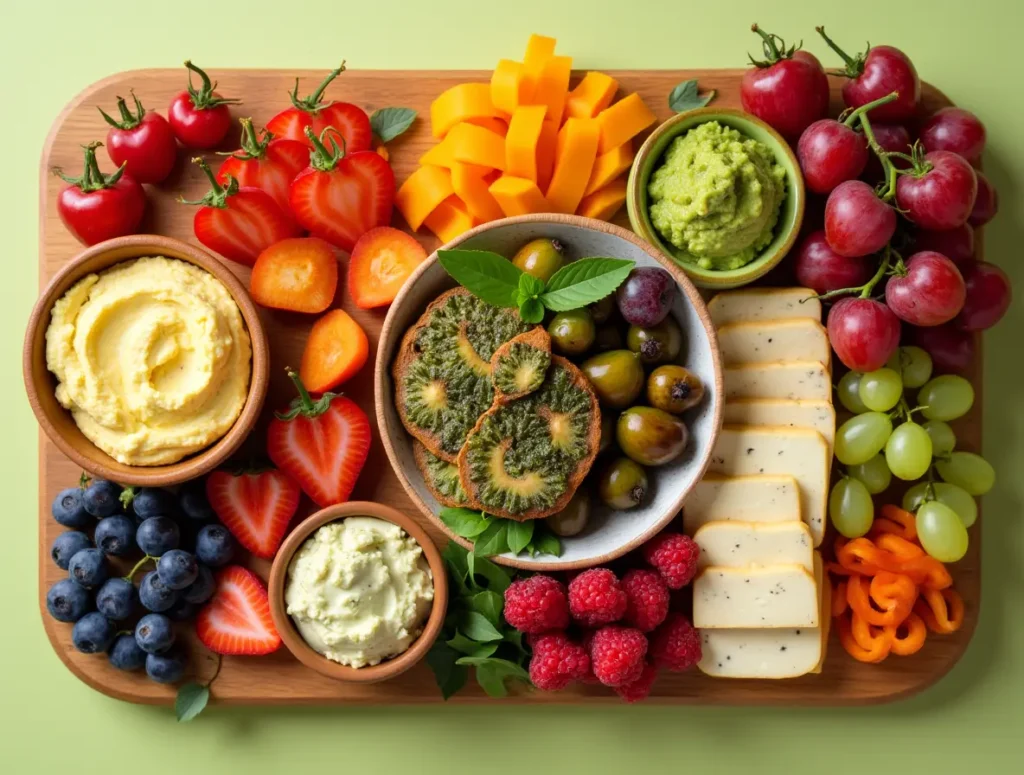
- Vegetarian Charcuterie: Swap out the meats for a selection of plant-based cheeses, roasted vegetables, and dips like hummus or guacamole.
- Breakfast Charcuterie: Create a morning-inspired spread with soft-boiled eggs, croissants, fresh berries, and breakfast meats like bacon or sausage.
- Sweet Charcuterie: Make a dessert charcuterie with chocolate, fruit, cookies, and small pastries.
Tips for Making Your Small Charcuterie Board Stand Out
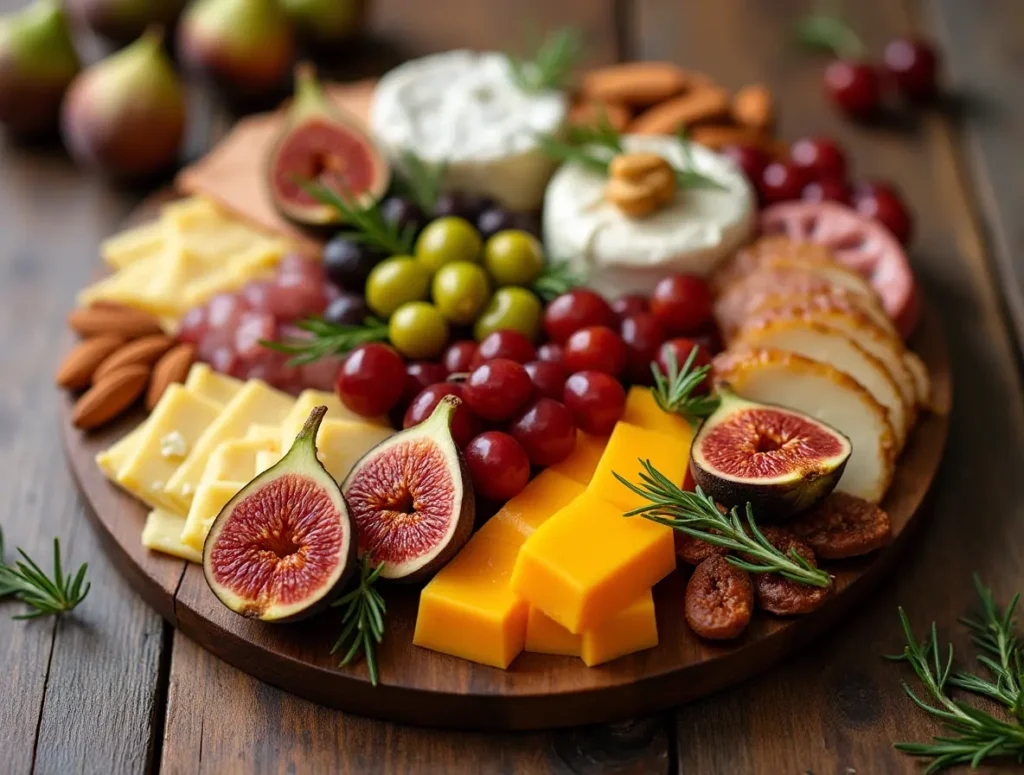
- Use Seasonal Ingredients: Incorporate seasonal fruits, nuts, and herbs to make your board feel fresh and timely.
- Go Local: Look for local artisanal cheeses and meats to give your charcuterie board a unique touch.
- Vary the Shapes: Mix different shapes and sizes for visual interest. Use wedges, slices, and cubes of cheese, and layer meats for a beautiful presentation.
Conclusion: Mastering the Art of the Small Charcuterie Board
A small charcuterie board may seem simple, but it offers endless possibilities for creativity and customization. By selecting the right meats, cheeses, fruits, and accompaniments, you can create a visually stunning and delicious spread that will delight your guests or satisfy your own snack cravings.Remember, the beauty of a charcuterie board lies in its ability to reflect your personal taste and style. Whether you’re hosting an event or enjoying a quiet evening at home, a small charcuterie board is the perfect way to savor a variety of flavors and elevate any occasion.

